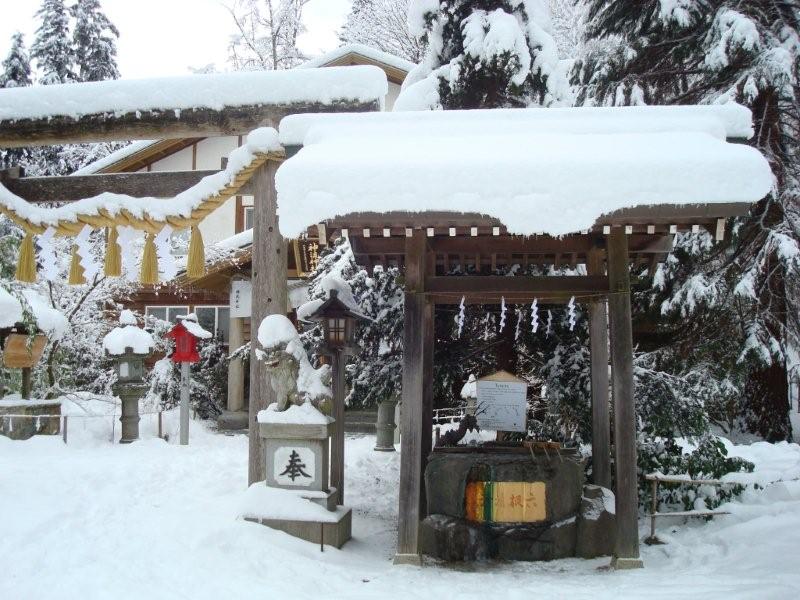I wrote this hoping that the last big snow in Kyoto (January 26, 2019) will NOT after all be the last snow ever in Kyoto. (It is so far, one year and four days later, but who is counting?)
******************
Over several years, the snow had undoubtedly become less and less frequent. And that winter, waking up to see whiteness all around was just a memory, but several times in December still, flakes appeared in the air and danced around tantalizingly, though there was little or no accumulation. Finally, though, one late January afternoon the snow started falling and this time the heavy flakes seemed serious and single-minded in their purpose.
By 8 or 9pm, the streetlights gave off enough of a glow to see that undeniably the world was covered with a magical layer in sparkling white. And still it was coming down.
By 10pm, her daughter, (a college student and not a little girl), was hurriedly putting on her shoes and coat to go on a walk. Her son, a junior high school student, was grinning with excitement and putting his shoes and coat on too.
She, their mother, could not possibly let them go alone at this unreasonable hour.
Outside snow was swirling, flakes busily falling, weather poetry for the snow-starved, the yuki-deprived.
They set off for Shisendo, the retreat with the entrance gates set back in a grove of bamboo trees. Shisendo is in Ichijoji, around 40 minutes away. But after 20 minutes, she noticed that the snowflakes were thinning out, though they were still clearly big fat flakes. She had wanted them to fall all through the night!
Mustn’t be greedy or dissatisfied. Must be grateful, she tells herself. Must post photos on facebook. Mustn’t think this is the last time to see snow. Must be hopeful.
They reach Shisendo and the delicate branches of the bamboo trees are sagging gracefully under centimeters of snow. However, the snow beneath them on the asphalt is slushy rather than powdery, the temperature bordering on too warm.

The chochin, the paper lantern marking the entrance to Hachidai Shrine, is just 20 meters away up the hill. It hangs next to a grey stone torii gate. “Take my photo next to the lantern”, she begs her reluctant daughter, and runs through the slush to stand beside the softly radiant chochin, which has a dusting of pretty snow on it.
Forty minutes later, they are back in their house. The photo is immediately uploaded to Facebook and receives international acclaim from two friends just waking up in California.
In hindsight, that is bitter-sweet, of course, because that night was the last snowfall ever in Kyoto. With a tip of its blizzardy hat, the snow saluted her, and then it was gone, all melted by morning, though a few tsubaki branches in the garden had still a little white slush collected on their thick dark leaves.

She guessed then that there would be no more snow, and indeed, this year, the weather is much too warm. It is as if she was reading the weather’s mind, as if it had been planning on quitting the snow business for a few years, intentionally running low on supplies and fulfilling its duties late if at all, and now it has finally closed up shop. 雪:閉店。
There are many photographers who wait for snow to fall in Kyoto, when they run to the famous temples and shrines to capture the scene before anyone has stepped on and corrupted the virgin snow. The steps of Kifune Jinja, for example, lined with striking red lanterns, are famously elegant and beautiful in newly fallen snow. What will these photographers do now?
And what will people who read poetry do when they come across all the tanka and haiku describing the centuries of snowy winters in Kyoto and in Japan? What will they think?
(The following haiku are by Basho and not necessarily about Kyoto, but the lack of snow this year affects the whole of Japan.)
雪と雪 今宵師走の 名月か
yuki to yuki/ koyoi shiwasu no/ meigetsu ya
The snow and snow.
This evening would have been
The great moon of December.
初雪や いつ大仏の 柱立
hatsu-yuki ya/ itsu daibutsu no/ hashira-date
The first snow,
When is the pillar set up
For the Great Buddha?
(poems taken from masterpiece-of-japanese-culture.com)

